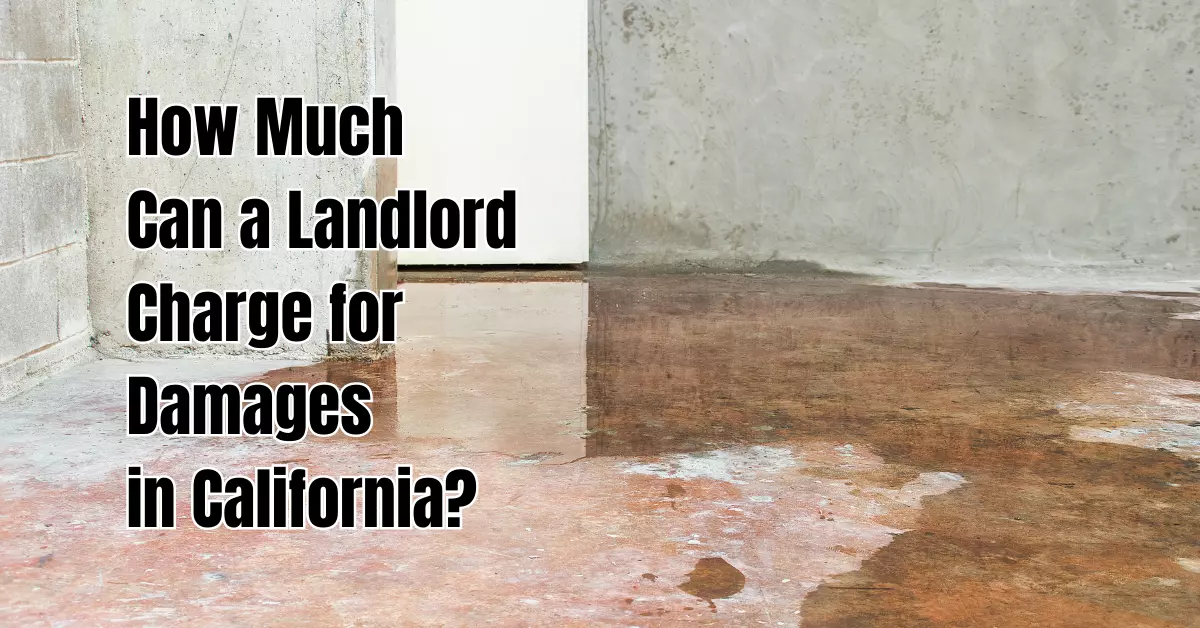How Much Can a Landlord Charge for Damages in California?
In california, a landlord can charge for damages beyond normal wear and tear. In most cases, a landlord must provide an itemized list of damages and associated costs within 21 days.
how much can a landlord charge for damages in california? Landlords in california are allowed to charge for damages caused by tenants beyond normal wear and tear. This includes any repairs or replacements necessary due to the tenant’s negligence or intentional damage to the rental property.
However, landlords cannot charge for damage resulting from aging, such as if the carpet needed to be replaced because it had worn out over time.

Understanding California Law Regarding Property Damage
Landlords in california have the legal right to charge their tenants for any damages to rental property.
However, it is important for landlords to follow the law and understand the specific rules regarding property damage. Here are some key points to keep in mind:
- California law allows landlords to charge tenants for damages beyond normal wear and tear.
- Landlords are required to provide an itemized list of damages claimed within 21 days after the tenant has vacated the property.
- The amount charged for damages must be reasonable and reflect the actual cost of repairs or cleaning.
Definition Of Property Damage
To avoid any disputes with tenants regarding damages, it is important for landlords to understand what constitutes property damage. Here are some examples:
- Holes in the walls or doors.
- Broken windows.
- Stains on the carpet or walls.
- Missing or damaged appliances.
- Pet damage.
It is important to note that regular wear and tear, such as faded paint or worn carpet from normal use, cannot be charged to the tenant.
The Responsibility Of California Landlords To Maintain Property Standards
California landlords have a legal obligation to provide their tenants with habitable living conditions.
This includes maintaining the property to certain standards to ensure the safety and well-being of tenants. Here are some key points to remember:
- Landlords must make any necessary repairs to ensure the property is habitable.
- The property must comply with state and local building codes and health and safety regulations.
- Failure to maintain a habitable living environment may result in penalties and lawsuits.
Tenants, on the other hand, should take care of the property and report any damages or necessary repairs in a timely manner.
How Much Can A Landlord Charge A Tenant For Property Damage In California

Factors To Consider When Determining The Cost Of Property Damage
As a landlord in california, knowing how much to charge a tenant for property damage can be a tricky task to handle.
Several factors come into play when calculating the cost to be imposed on a tenant. Here are some of the factors to consider when determining the cost of property damage:
The severity of the damage
The first thing to consider is the magnitude of damage caused. If the damage is extensive, the cost of repairs will be higher.
Age of property
The age of the property that has been damaged is also an essential factor to consider. If the property is new, the cost of repairs will be higher than an older property.
Type of damage
The type of damage is crucial in determining the cost of repairs. Minor damages like chipped paint would cost less, compared to major damages like a broken window, which requires complete replacement.
Types Of Property Damage
Property damage can come in various forms, and it is the responsibility of the landlord to know the kind of damages they may encounter. Here are some of the types of property damage a landlord might face:
Wear and tear
This type of damage refers to the natural deterioration of the property that happens gradually over time due to use and age.
Intentional damage
This type of damage occurs when a tenant intends to cause harm to the property. For instance, drilling holes in walls or ruining flooring deliberately.

Unintentional damage
This type of damage happens without the tenant having any intention of causing it. For example, spilling red wine on a white carpet.
Maximum Limits Of Charges That A Landlord Can Impose On A Tenant
Suppose a tenant causes damage to rental property beyond normal wear and tear. In that case, the landlord can impose a charge on the tenant for the cost of repairs.
Here are the maximum limits of charges that a landlord can impose on a tenant in california:
Security deposit
In california, a landlord can deduct the cost of repairs from the tenant’s security deposit. However, the deduction cannot exceed the actual cost of repairs.
Small claims court
If the cost of repairs exceeds the security deposit amount, a landlord can sue the tenant in small claims court for the amount above the security deposit.
Tenant’s liability insurance
In california, some landlords require tenants to have liability insurance to cover any damages caused. So, depending on their policy, the insurance may cover the cost of repairs or a certain percentage of it.
FAQs for How Much Can a Landlord Charge for Damages in California?
How Much Can A Landlord Legally Charge For Damages In California?
Landlords in california can charge tenants for damages beyond normal wear and tear, up to the total cost of repairs.
Can A Landlord Charge For Damages If They Never Conducted A Move-Out Inspection?
Yes, a landlord can still charge for damages if they never conducted a move-out inspection, but there are limitations.
What Is Considered Normal Wear And Tear In California Rental Properties?
Normal wear and tear in california rental properties include minor scuffs and nicks, but no damage due to negligence or abuse.
Can A Landlord Deduct Carpet Cleaning Costs From A Tenant’S Security Deposit?
Yes, landlords can deduct carpet cleaning costs from a tenant’s security deposit if it is necessary to restore the unit to its original condition.
Conclusion
Navigating California’s rental laws can feel like threading a needle. But rest assured, a landlord can’t overcharge you for damages.
It’s tied to your security deposit, the actual cost of repairs, and receipts must be provided. So, know your rights and stay informed, making rental life a breeze.
Reference
https://students.ucsd.edu/_files/sls/handbook/SLSHandbook-LandlordTenant1.pdf